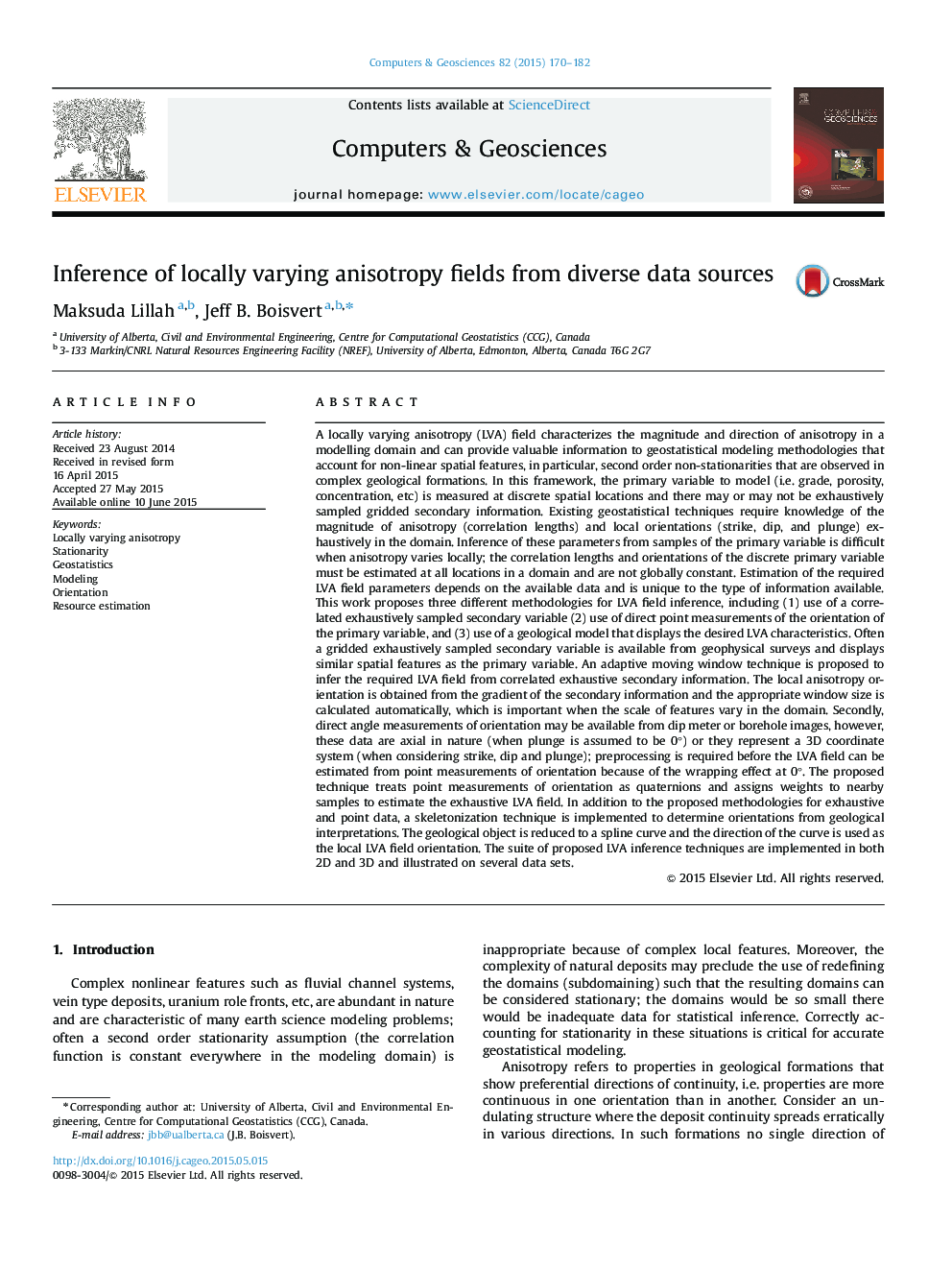| کد مقاله | کد نشریه | سال انتشار | مقاله انگلیسی | نسخه تمام متن |
|---|---|---|---|---|
| 6922554 | 865114 | 2015 | 13 صفحه PDF | دانلود رایگان |
عنوان انگلیسی مقاله ISI
Inference of locally varying anisotropy fields from diverse data sources
ترجمه فارسی عنوان
استنتاج زمینه های انحصاری محلی متفاوت از منابع اطلاعات متنوع
دانلود مقاله + سفارش ترجمه
دانلود مقاله ISI انگلیسی
رایگان برای ایرانیان
کلمات کلیدی
محلی غیر انحصاری، استنادی، آمار زمین شناسی مدل سازی، گرایش، برآورد منابع،
موضوعات مرتبط
مهندسی و علوم پایه
مهندسی کامپیوتر
نرم افزارهای علوم کامپیوتر
چکیده انگلیسی
A locally varying anisotropy (LVA) field characterizes the magnitude and direction of anisotropy in a modelling domain and can provide valuable information to geostatistical modeling methodologies that account for non-linear spatial features, in particular, second order non-stationarities that are observed in complex geological formations. In this framework, the primary variable to model (i.e. grade, porosity, concentration, etc) is measured at discrete spatial locations and there may or may not be exhaustively sampled gridded secondary information. Existing geostatistical techniques require knowledge of the magnitude of anisotropy (correlation lengths) and local orientations (strike, dip, and plunge) exhaustively in the domain. Inference of these parameters from samples of the primary variable is difficult when anisotropy varies locally; the correlation lengths and orientations of the discrete primary variable must be estimated at all locations in a domain and are not globally constant. Estimation of the required LVA field parameters depends on the available data and is unique to the type of information available. This work proposes three different methodologies for LVA field inference, including (1) use of a correlated exhaustively sampled secondary variable (2) use of direct point measurements of the orientation of the primary variable, and (3) use of a geological model that displays the desired LVA characteristics. Often a gridded exhaustively sampled secondary variable is available from geophysical surveys and displays similar spatial features as the primary variable. An adaptive moving window technique is proposed to infer the required LVA field from correlated exhaustive secondary information. The local anisotropy orientation is obtained from the gradient of the secondary information and the appropriate window size is calculated automatically, which is important when the scale of features vary in the domain. Secondly, direct angle measurements of orientation may be available from dip meter or borehole images, however, these data are axial in nature (when plunge is assumed to be 0°) or they represent a 3D coordinate system (when considering strike, dip and plunge); preprocessing is required before the LVA field can be estimated from point measurements of orientation because of the wrapping effect at 0°. The proposed technique treats point measurements of orientation as quaternions and assigns weights to nearby samples to estimate the exhaustive LVA field. In addition to the proposed methodologies for exhaustive and point data, a skeletonization technique is implemented to determine orientations from geological interpretations. The geological object is reduced to a spline curve and the direction of the curve is used as the local LVA field orientation. The suite of proposed LVA inference techniques are implemented in both 2D and 3D and illustrated on several data sets.
ناشر
Database: Elsevier - ScienceDirect (ساینس دایرکت)
Journal: Computers & Geosciences - Volume 82, September 2015, Pages 170-182
Journal: Computers & Geosciences - Volume 82, September 2015, Pages 170-182
نویسندگان
Maksuda Lillah, Jeff B. Boisvert,
